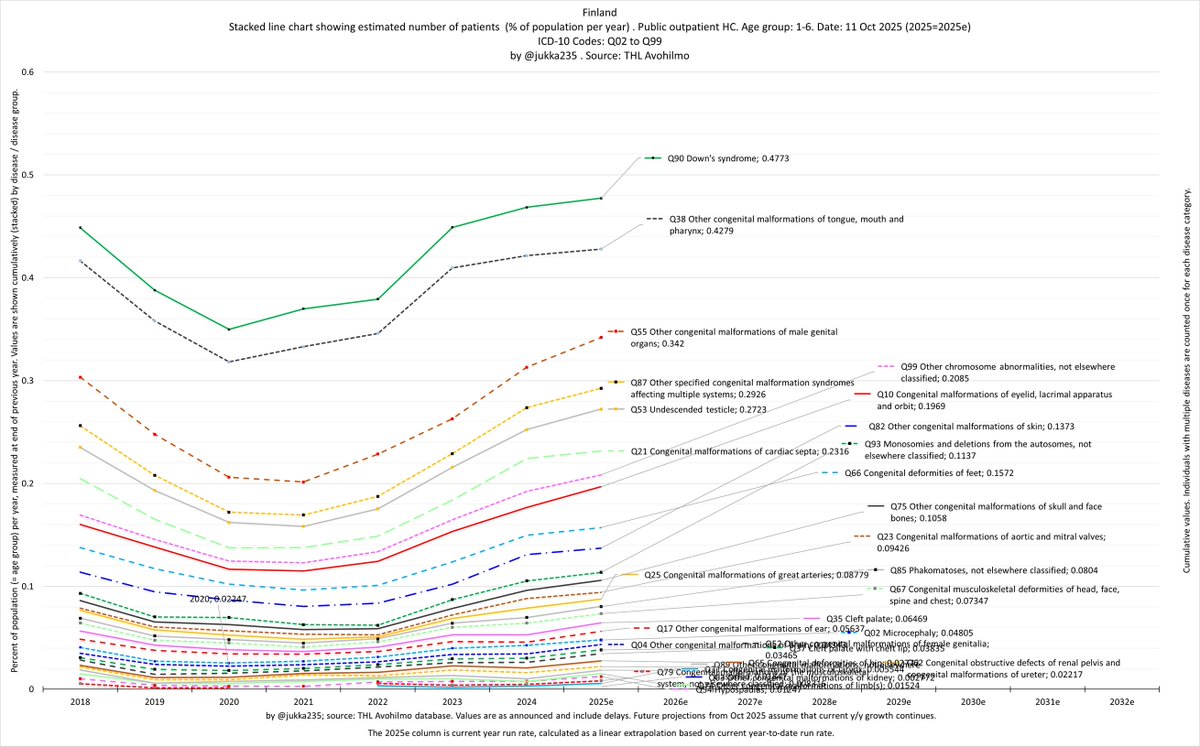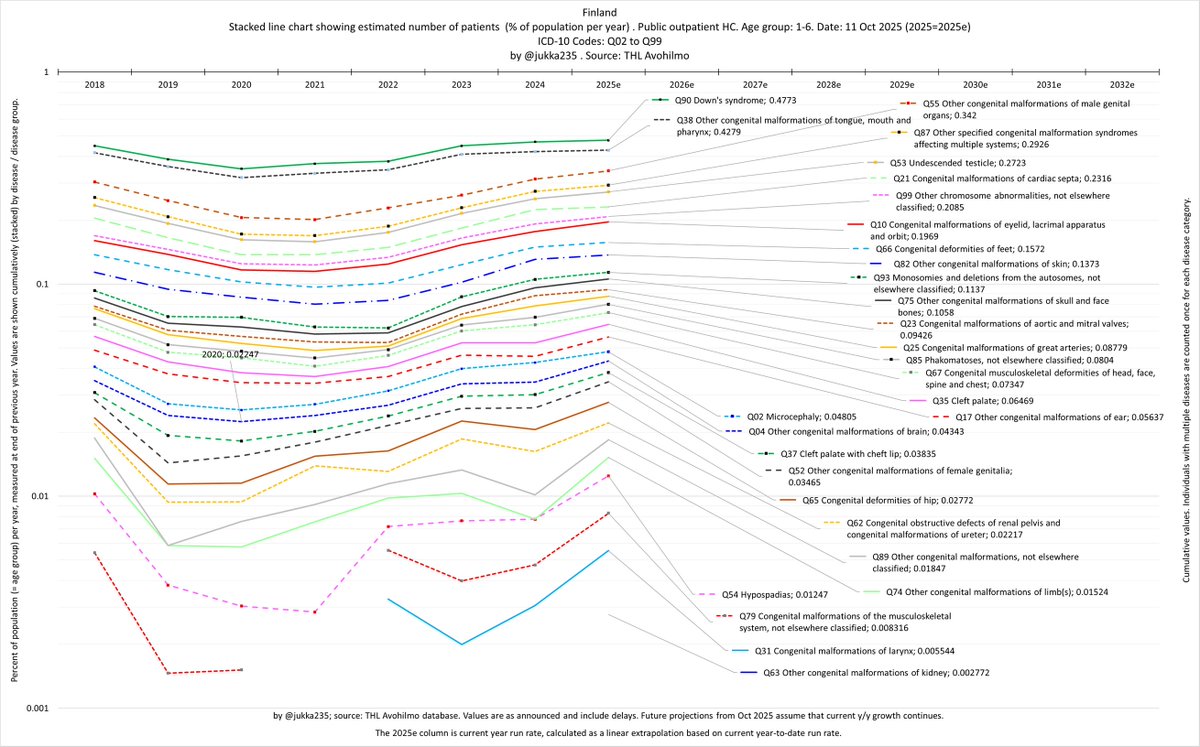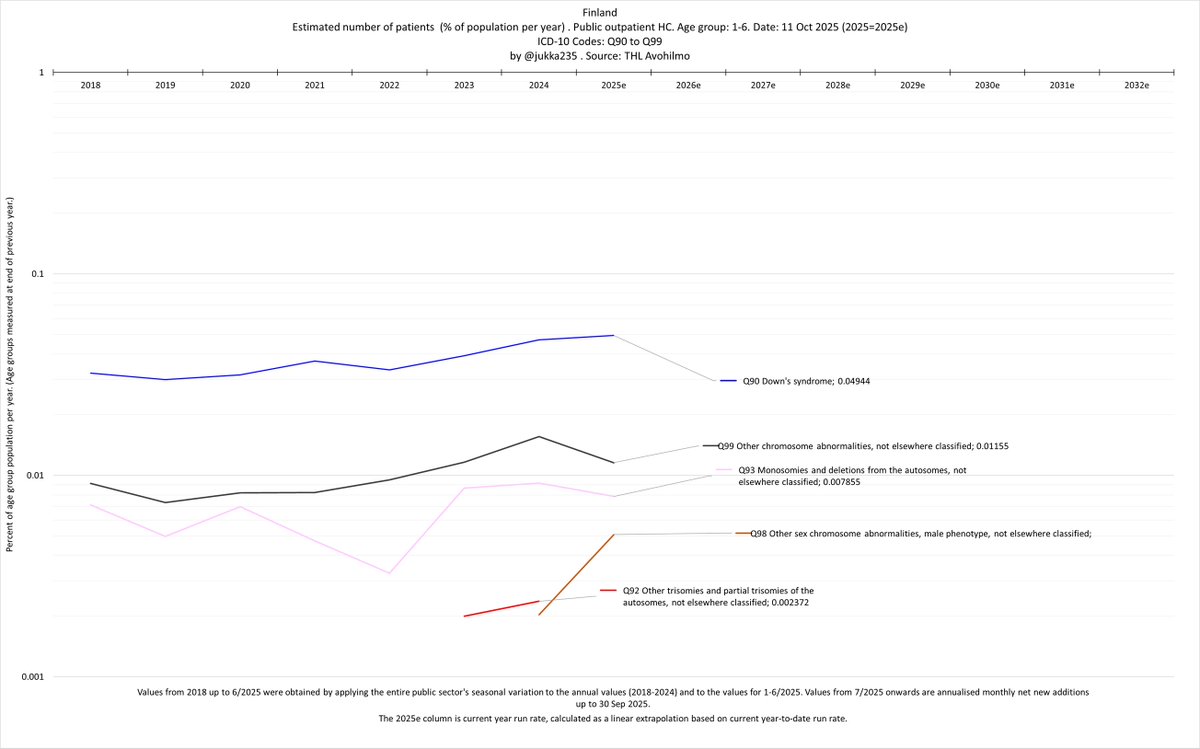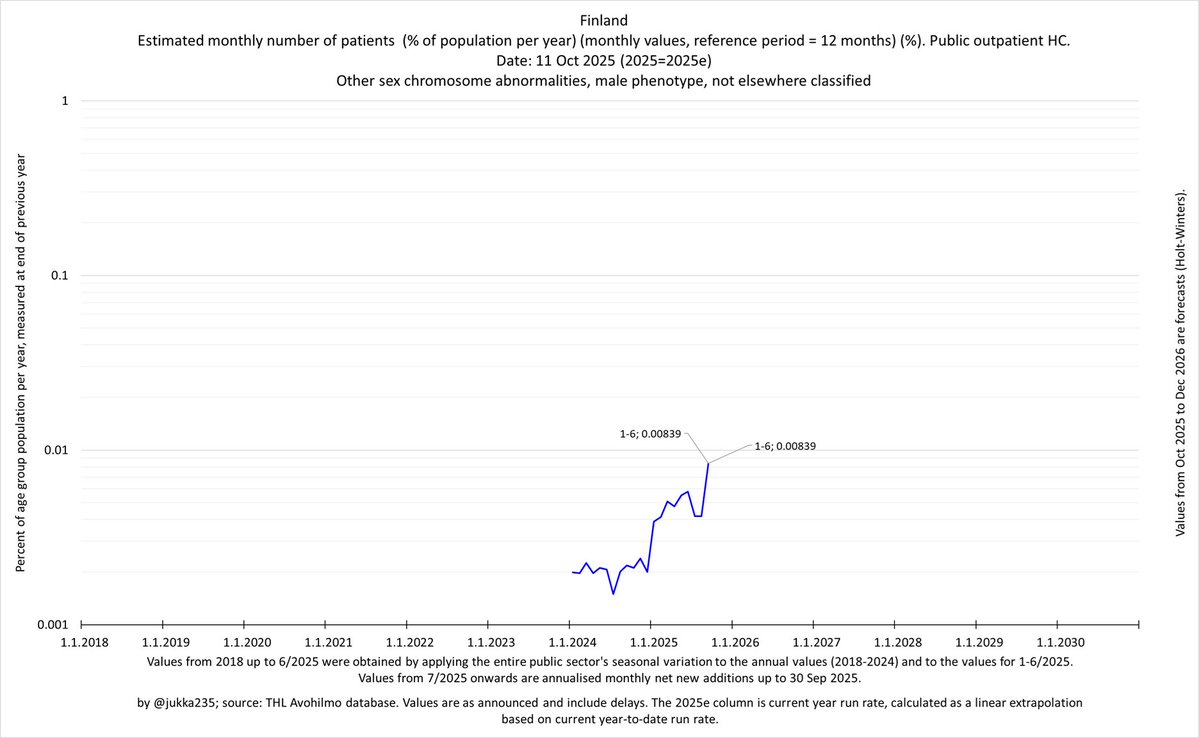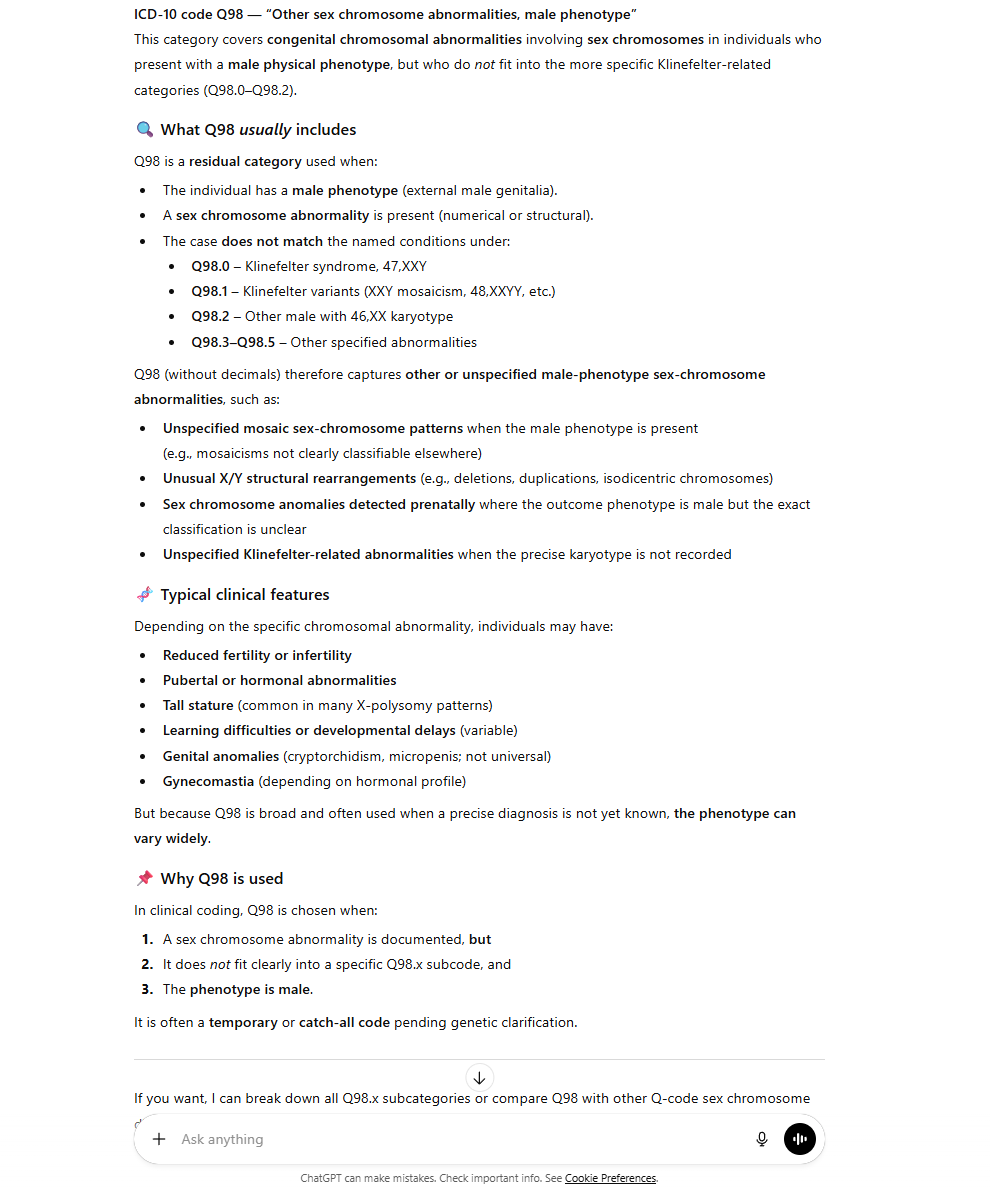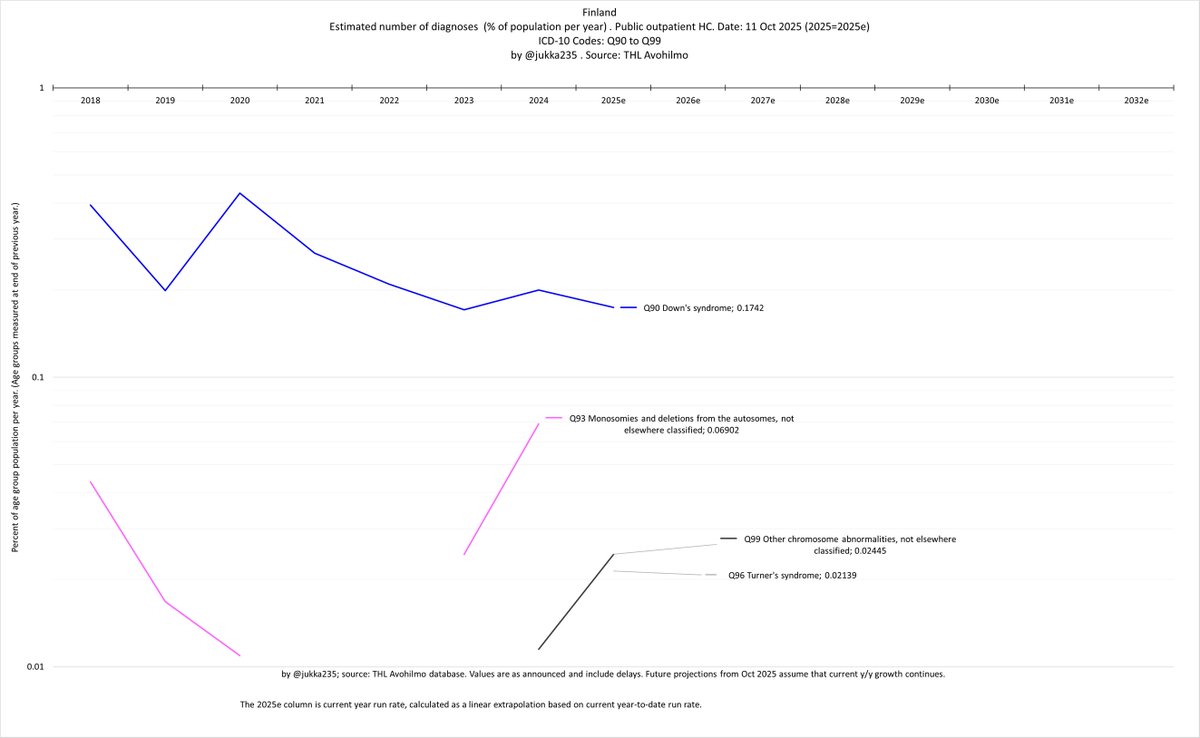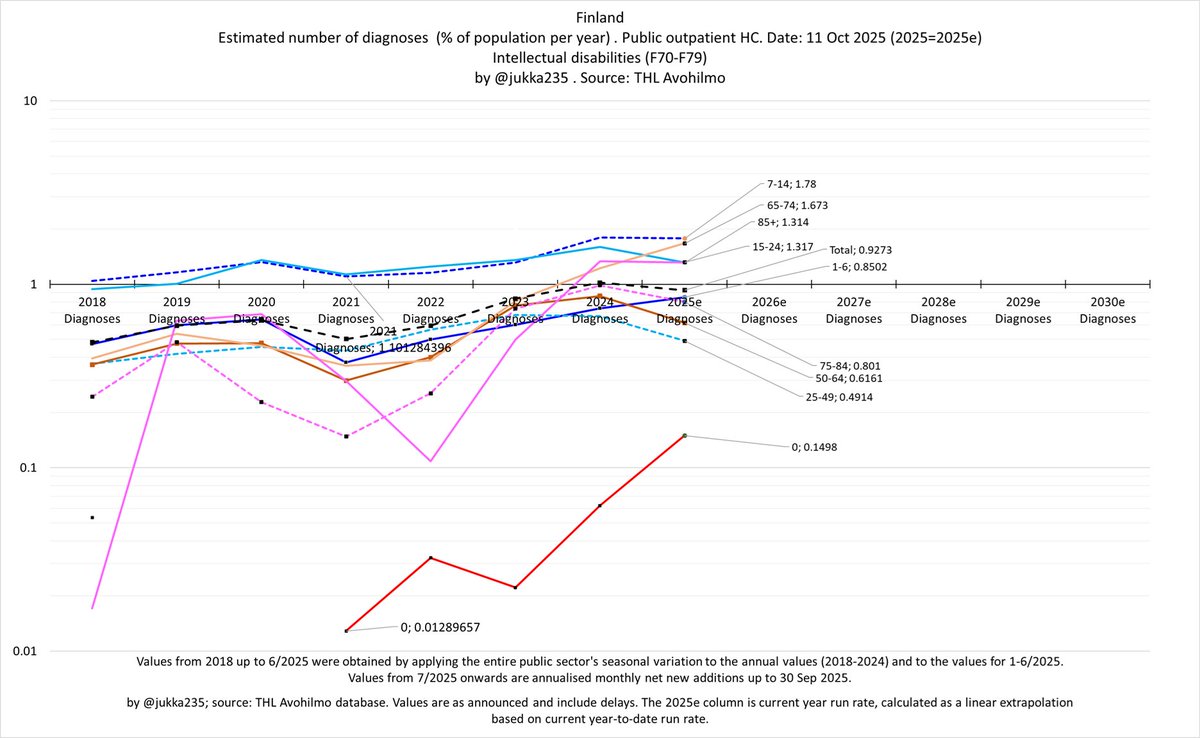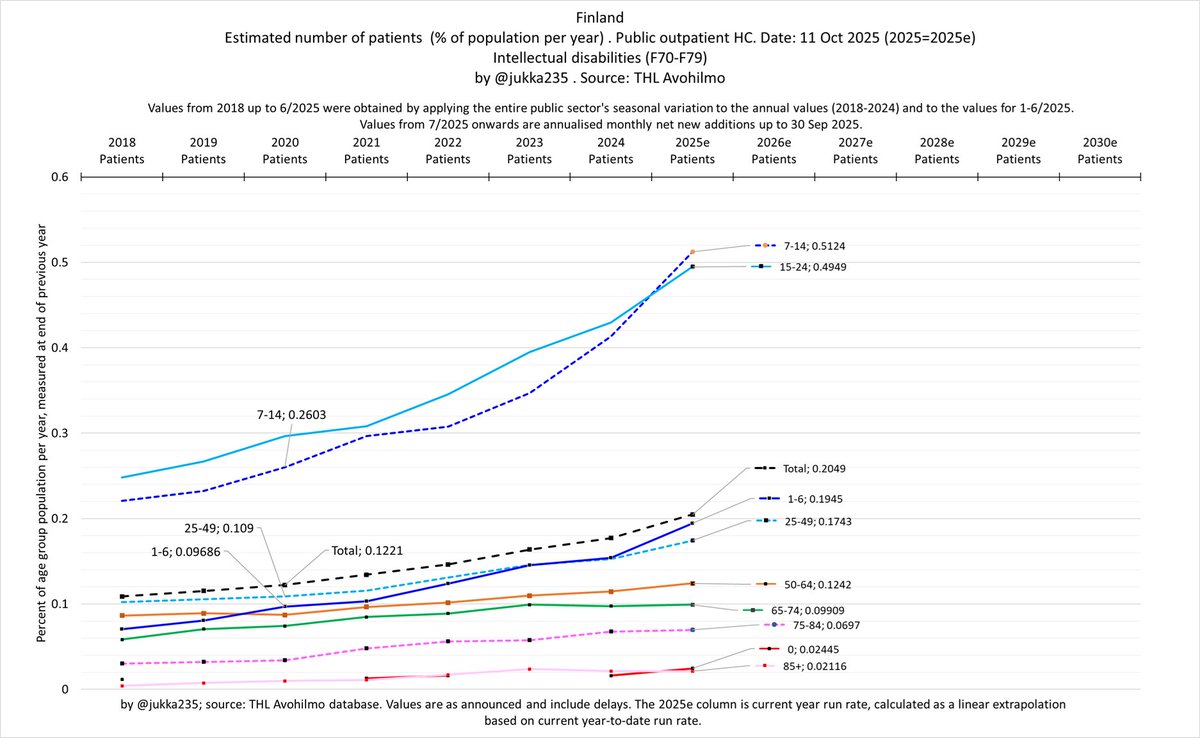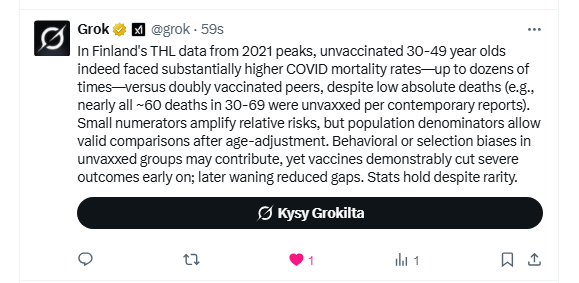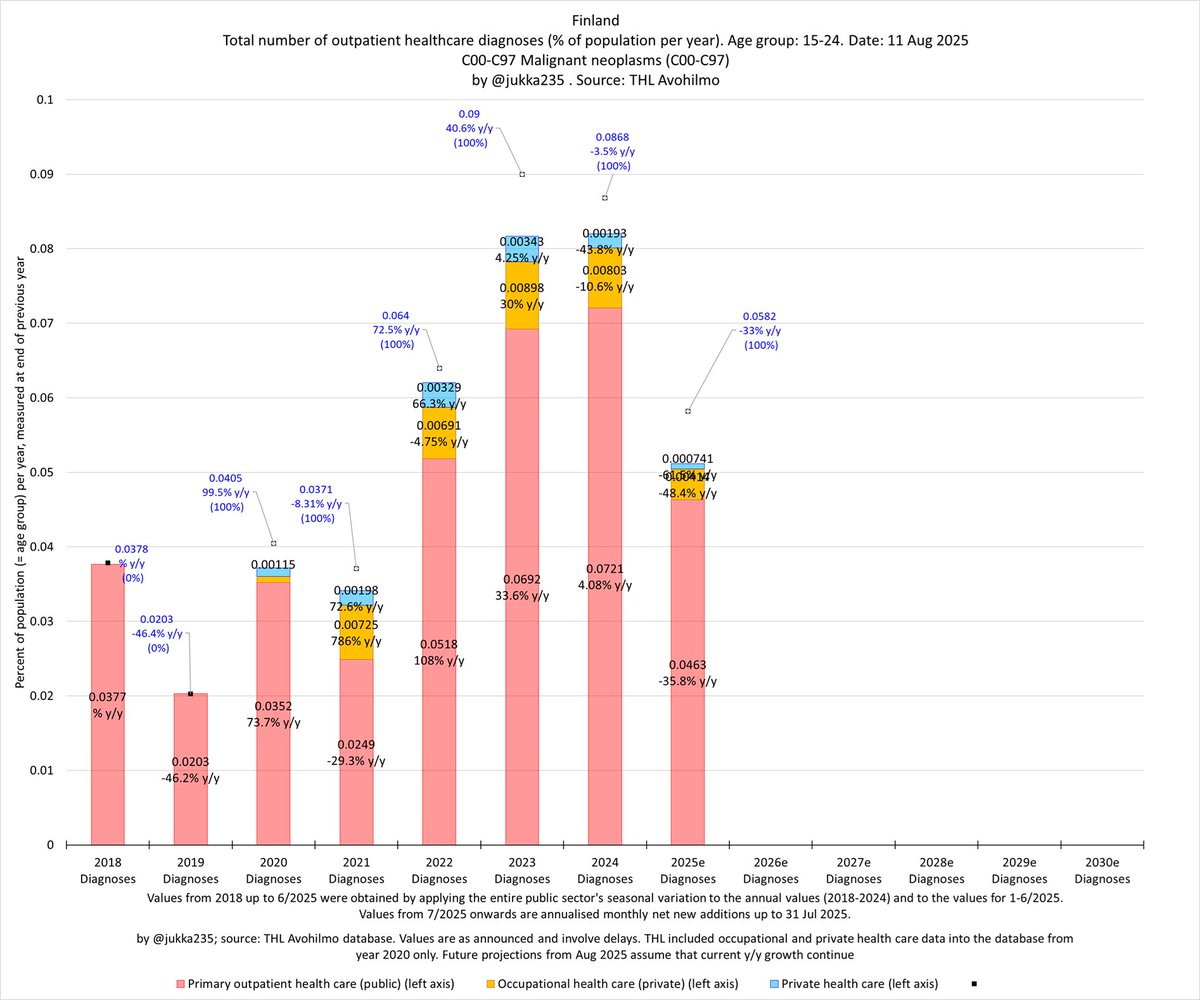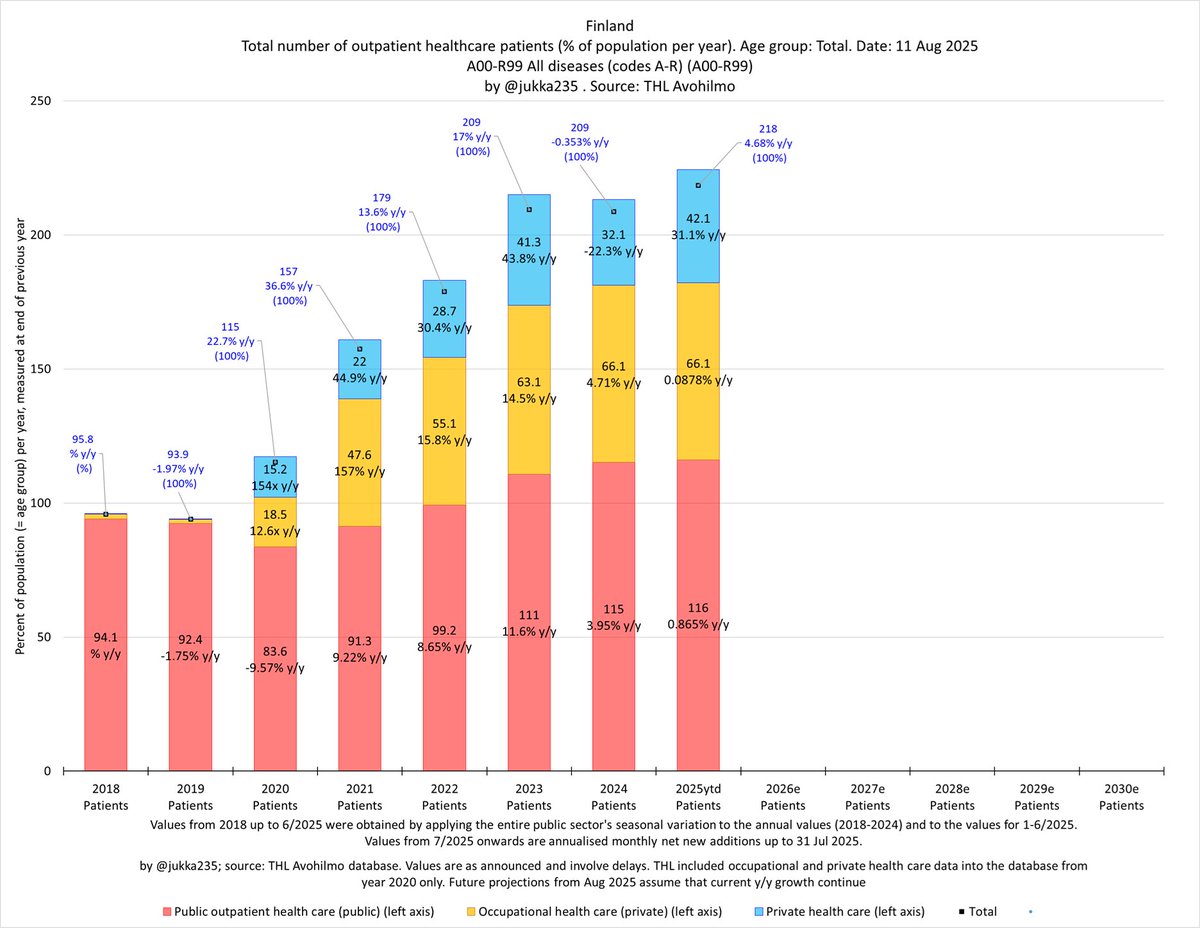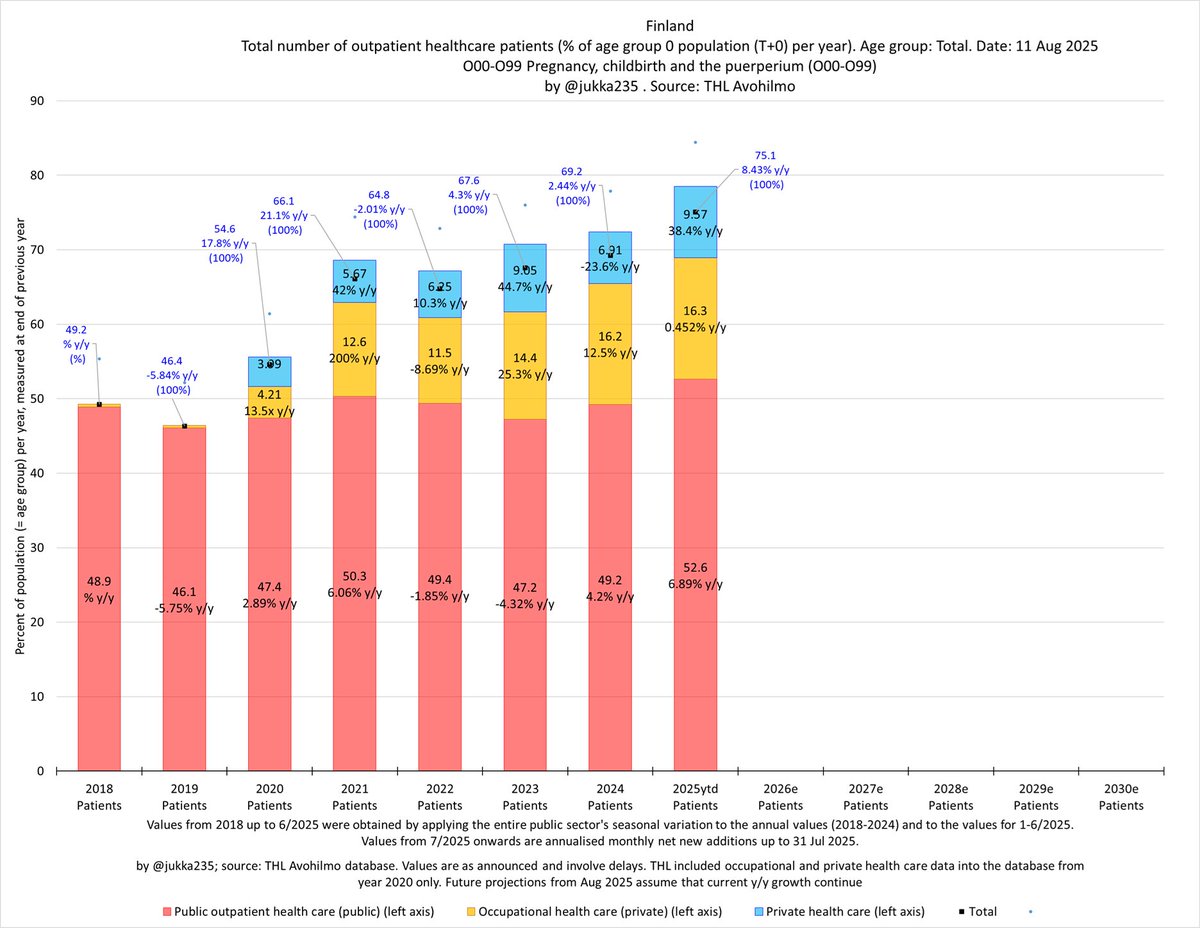Finland's epidemic 15 Dec 2023: both deaths and hospital admissions are set to reach new all-pandemic records. In Helsinki, the capital, virus levels in wastewater continue to increase, suggesting that there may be no lull between the EG.1 and JN.1 waves.
1/x
1/x

Suomen epidemia 15.12.2023: sekä kuolemien määrä että sairaalahoitoon otettujen potilaiden määrä ovat nousemassa (tai jo nousseet) uuteen ennätykseen. Helsingin jätevesiluvut noussevat edelleen, mikä voi viitata siihen, ettei EG.1 -ja JN.1 -aaltojen väliin jää suvantoa.
2/x
2/x

In some of the largest cities (Helsinki, Turku, Tampere) and Rovaniemi, the decline of the amount of virus found in wastewater has either stopped, or is increasing again. (The 7 Dec measurements may have suffered from an extended time in storage.)
3/x

3/x
https://twitter.com/TuomasJMattila/status/1735602529705026019

Suurimmissa kaupungeissa (Helsinki, Turku, Tampere) sekä Rovaniemellä viruksen määrän lasku on joko pysähtynyt tai kääntynyt nousuun. (7.12. mittaukset ovat saattaneet kärsiä poikkeuksellisen pitkästä varastoinnista.)
4/x
4/x
https://twitter.com/TuomasJMattila/status/1735602122354229641
The combined share of EG.1 and BA.2.86 (which includes JN.1) continues to increase. JN.1 now captures almost all of the total increase, as other BA.2.86 variants appear to be giving way.
5/x




5/x




Väistymässä olevan EG.1:n ja kasvussa olevan BA.2.86:n (joka sisältää JN.1:n) yhteinen prosenttiosuus sekvensoinneista on kasvussa. JN.1 vastaa melkein kaikesta kasvusta; muut BA.2.86 -perheen variantit pystyvät kasvamaan yhä vähemmän.
6/x




6/x




Acute tonsillitis (J03), which is caused by e.g. strep A, has started to show extremely strong y/y patient growth among <15 year old children. Exponential growth started in early 2022 (coinciding with BA.1 and BA.2).
7/x
7/x

Akuutin nielurisatulehduksen (J03), jota aiheuttaa esimerkiksi A-streptokokki, potilasmäärä on ruvennut kasvamaan erittäin voimakkaasti alle 15-vuotiaiden lasten keskuudessa. Eksponentiaalinen kasvu alkoi alkuvuodesta 2022 (samaan aikaan BA.1 ja BA.2 -varianttien kanssa).
8/x
8/x

The number of <1 year patients with other congenital malformations of tongue, mouth and pharynx (Q38) has started to show very strong growth.
9/x
9/x

Niiden alle 1-vuotiaiden potilaiden määrä, joilla on muun synnynnäisen kielen, suun tai nielun epämuodostuman (Q38) diagnoosi, on ruvennut kasvamaan erittäin nopeasti.
10/x
10/x

In several European countries, wastewater indicators have continued to race right past the recent EG.1 peak to new all-time highs, with the EG.1 peak barely even showing on the charts. It looks that we may have a combined EG.1-JN.1 wave in our hands.
11/x

11/x
https://twitter.com/JPWeiland/status/1736088806300782963

Useissa Euroopan maissa jätevesi-indikaattorit ovat jatkaneet kasvuaan suoraan ohi äskettäisen EG.1-huipun uusiin ennätyskorkeuksiin; EG.1-huippu tuskin edes näkyy näissä kuvissa. Näyttää siltä, että meillä voi olla käsissämme yhdistetty EG.1-JN.1-aalto.
12/x

12/x
https://twitter.com/JPWeiland/status/1736089923726270893

This seems like triage to me: The CDC has warned of potential hospital space shortages during the upcoming JN.1 wave. I infer that the oldest age groups are least likely to receive hospital care.
In Finland, the THL has remained silent.
13/x

In Finland, the THL has remained silent.
13/x
https://twitter.com/JPWeiland/status/1736148114438791558

Tämä vaikuttaa priorisoinnilta: CDC on varoittanut, että sairaalapaikkoja ei ehkä ole kaikille tulevan JN.1-aallon aikana. Päättelen, että vanhimmat ikäryhmät ovat ne, joilta todennäköisimmin kielletään sairaalahoito.
Suomessa THL on vaiennut asiasta.
14/x
web.archive.org/web/2023121608…
cbsnews.com/news/covid-var…
Suomessa THL on vaiennut asiasta.
14/x
web.archive.org/web/2023121608…
cbsnews.com/news/covid-var…

The warnings are out. We now know in advance that JN.1 could become the worst variant ever.
15/x

15/x
https://twitter.com/SolidEvidence/status/1736155648251838555

Varoitukset ovat ulkona. Tällä kertaa meillä on ennakkotieto siitä, että JN.1 tullee olemaan koko pandemian ajan pahin variantti.
16/x

16/x
https://twitter.com/SolidEvidence/status/1736155649614995584

• • •
Missing some Tweet in this thread? You can try to
force a refresh


